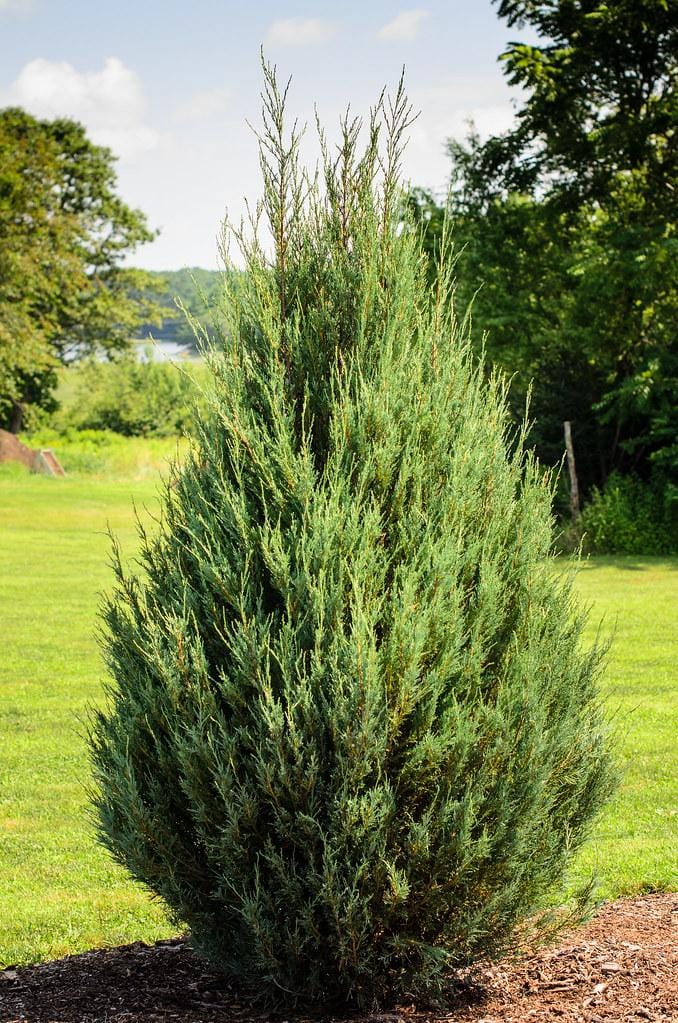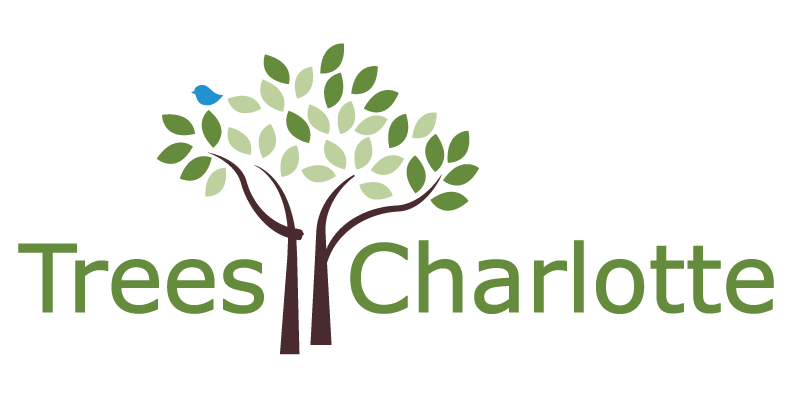Tree of January 2021: Eastern Red Cedar

Eastern Red Cedar
To kick off the new year, we’ll be highlighting some of our favorite trees with a new “Tree of the Month” series. January’s tree is the Eastern Red Cedar, also known as the cedar that’s not a cedar. This popular evergreen is found in the eastern United States, including right here in Charlotte. This cedar juniper makes for a great yard tree due to its dense body that provides privacy, small berries that attract colorful birds, and impressive soil and pollution tolerance.
Size at maturity:
Height: 35-50 feet
Width: 8-20 feet

Shape:
Pyramidal that widens out as it gets older

Leaves:
- Scale-like clusters that form branchlets
- Can be somewhat prickly to touch
Cones/Fruit:
- Females produce small blue-grey “berries” that look like fruit, but are actually cones made of infused scales.
- Males have brown cones of the same size.

Sun:
- Needs full or partial sunlight, but full is preferred (at least 6 hours of direct sunlight per day)
Soil:
- This tree can tolerate a wide range of soil moisture and pH, so long as the soil is well-drained.
- The eastern red cedar also has good drought tolerance.
Growth and Use:
The eastern red cedar is a prolific grower and its seeds can take hold anywhere from backyards to abandon fields to the side of a highway. In some areas in the central US, this tree is almost seen as “weedy” because of how quickly and aggressively it can populate a landscape. But lucky for us, we can use it as a fast growing, luscious screen tree.
Eastern red cedars are most commonly used as windbreaks or privacy screens along homes or buildings due to their dense foliage. Their reddish lumber is commonly used for furniture, fence posts, and other novelties.
Environmental/Wildlife Benefits:
These trees can tolerate many weather extremes and road pollution, making them an ideal tree to plant when faced with the effects of climate change and increasing pollution. The eastern red cedar makes a very happy home for small birds and other wildlife that take shelter in its dense foliage and eat the small blue “berries” that develop in the spring.
Fun fact:
The eastern red cedar was the primary wood of the pencil industry in colonial times. This lasted for over a century until they switched to western cedars, which were more abundant.





